On this page
HedgerowsThis page lists a selection of books about British hedgerows and hedgerow wildlife.The books are arranged by publication date with the most recent at the top.
There are a number of pages covering books about British trees:
Identification guides
Urban trees
Hedgerows
More pages will be added as time allows.
For books about some specific families or species of trees see:
Ash
Elm
Hazel
Lime
Oak
Poplar
Rowan
Willow
Yew
|
|
|
|
A Natural History of the Hedgerow: and Ditches, Dykes and Dry Stone WallsJohn Wright
Profile Books
2016
"One of Britain's best known naturalists, John Wright introduces us to the natural and cultural history of hedges (as well as ditches, dykes and dry stone walls) - from the arrival of the first settlers in the British Isles to the modern day, when we have finally begun to recognise the importance of these unique ecosystems. His intimate knowledge of the countryside and its inhabitants brings this guide to life, whether discussing the skills and craft of hedge maintenance or the rich variety of animals, plants, algae and fungi who call them home. Informative, practical, entertaining and richly illustrated in colour throughout, A Natural History of the Hedgerow is a book to stuff into your pocket for country walks in every season, or to savour in winter before a roaring fire."
|
Buy from amazon.co.uk 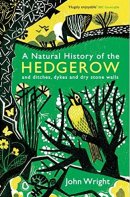
|
|
Devon HedgesDevon Hedge Group
2015
"For everyone interested in Devon hedges and their special place in the Devon countryside and urban environment! 100 pages, with colour photographs and illustrations. Detailed practical guidance on management, including trimming, laying and bank repair plus new hedge creation. Expert accounts on history, wildlife including dormice, hedgerow trees, garden hedges, education and the law.
|
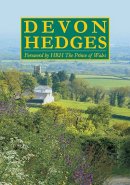 |
|
Fields, Hedges and DitchesNigel Harvey
Shire Publications
2011
"This book describes the making and changing of the field system and the part played in it by the engineer and the industrialist as well as by the farmer. It explains where the open-field system can still be seen in operation, how certain ridges and hedges recall the medieval ox-teams, why Thomas a Becket and P. B. Shelley deserve a place in farming history, why the field patterns of some areas are irregular and others orderly, and what evidence Victorian novels provide of the importance of land drainage."
|
Buy from amazon.co.uk 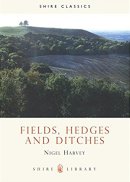
|
|
A Guide to HedgerowsGill Crane
Field Studies Council
2009
A 8 page fold-out guide that covers plants, birds, mammals and invertebrates that can be found in British hedgerows.
|
Buy from amazon.co.uk 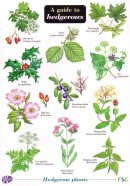
|
|
Woods, Hedges and Leafy LanesRichard Muir
The History Press
2008
"The landscapes of Britain have been shaped by hundreds of generations, moulding the countryside to fit with their own ideals, through the planting of hedgerows and wooded pastures. This type of scenery has been long in the making, with new additions and flourishes being added every century, yet in today's modern world it is rapidly being transplanted by concrete and tarmac. In this absorbing new book, renowned landscape detective Richard Muir unravels the history of woods, hedgerows and leafy lanes, producing a fascinating account of a disappearing landscape."
|
Buy from amazon.co.uk 
|
|
Hedgerow and Wildlife: A Guide to Animals and Plants of the HedgerowJane Eastoe
National Trust
2008
"This book offers an insight into hedgerow wildlife: how they developed (and are managed by man), how to identify different types, and what plants, birds, insects and small mammals can be found inside."
|
Buy from amazon.co.uk 
|
|
Hedges and Hedgelaying: A Guide to Planting, Management and ConservationMurray MacLean
Crowood Press
2006
"Hedges and Hedgelaying contains of wealth of practical information and covers: the selection of hedgerow shrubs and trees and the associated significance of soil types and topography; the planting of hedges and the necessary preparation work; the use of trees in the hedgerow and the value of field margins; weed, pest and disease control, and hedge cutting, maintenance and protection; and the craft of hedgelaying and the tools and processes involved."
|
Buy from amazon.co.uk 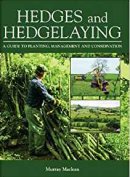
|
|
Birds of the Devon HedgerowsSandra Chalton
Orchard Publications
2006
A 36 page booklet.
|
Buy from amazon.co.uk 
|
|
Hedgerow History: Ecology, History and Landscape CharacterGerry Barnes & Tom Williamson
Windgather Press
2005
"In a rural landscape dominated by enclosure, a working knowledge of hedges is an essential part of every landscape historian's toolkit; yet we understand them less well than we do other features in the landscape. This important book addresses this problem. The authors ask why hedgerows vary across different parts of Britain, and investigate the ecological, economic and historical reasons for these variations. Drawing upon a unique computerised analysis of hedges in Norfolk, they explore how hedges came into existence, and how they have changed over time. They move beyond the myth that a hedge can be dated simply by counting species, and develop instead a much more sophisticated account of hedgerow history. They point out marked geographic variations in species content and diversity, and explore the reasons for these differences. By exploring the nature of hedges at the regional level - and by employing an innovative mix of ecological, archaeological and historical investigative techniques - this book's analysis has important implications for landscape history across the whole of Britain."
|
Buy from amazon.co.uk 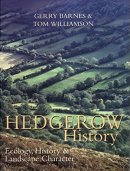
|
|
The Hedge Tree HandbookJon Stokes, Kevin Hand
Tree Council
2004
"Hedges and hedge trees have always played a variety of important roles in British history: as vital habitats for a multitude of wildlife; as sources of food, fuel and timber; as boundary makers; as shelter for lifestock; and not least of course, as beautiful and enjoyable features of the countryside. Since the late 18th century, however, the abundance of hedge trees has dramatically declined. Periodic changes in farming techniques and agricultural needs, increased use of machinery, hedge removal, Dutch elm disease, neglect and lack of replacement have all taken their toll on the hedge tree population. The Hedge Tree Handbook explains the value of hedge trees, explores their fascinating history and points the way to halting their decline as well as to the action needed now to establish the hedge trees of the future
|
Buy from amazon.co.uk 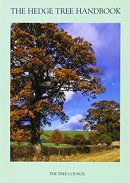
|
|
The Living History of Our Hedgerows: A Guide to Dating HedgerowsLeslie Chapman
Orchard Publications
2001
|
Buy from amazon.co.uk 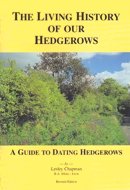
|
|
Living Landscapes: Hedges and WallsTom Williamson
National Trust
1999
"The fourth title in this series contains information about the management of existing woodland and hedgerows. It also examines the planting of new areas for multiple land use, nature conservation, amenity value, sport or recreation. One section looks at associated crafts."
|
Buy from amazon.co.uk 
|
|
Small Woods and HedgerowsValerie Porter
Pelham Books
1990
"The fourth title in this series contains information about the management of existing woodland and hedgerows. It also examines the planting of new areas for multiple land use, nature conservation, amenity value, sport or recreation. One section looks at associated crafts."
|
Buy from amazon.co.uk 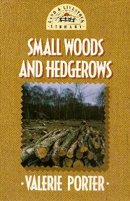
|
|
HedgesE. Pollard, M. D. Hooper and N. W. Moore
Collins
New Naturalist 58
1974
|
Buy from amazon.co.uk 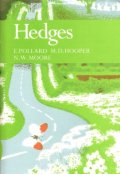
|
|
The Story Of Hedgerow And PondR.B. Lodge
B/W illustrations: R.B. Lodge
Colour illustrations from drawings by G.E. Lodge
Charles H. Kelly
1911
From the opening chapter: "I wonder how often children say, and bigger people too, that there is 'nothing to see'? Perhaps they are told to go for a walk; and they say, 'Oh, that is such an ugly way; there is nothing to do, and nothing to see.' Then another direction is suggested, but they don't like that one any better; there also, they say, there is 'nothing to see.' But are there not the hedgerows, which give England its chief charm? In my opinion a common hedgerow is more beautiful and more full of interest than the best-kept garden. In fact, very often the more pretentious a garden is, the uglier it is. But the hedgerow is full of life and full of surprises for those who take the trouble to look for them, and the more you search the more there is to reward you for doing so, while the changing seasons provide a constant variety. If you were to start tomorrow to collect, or only to count and keep a list of, all the different plants and flowers which you could find in the hedges and growing on the banks and sides of the ditches wherever you happen to live, you would have work enough to keep you busy and interested at every season of the year for a very long time; and then if you added to that list other kinds of plants in different parts of the country - when at school, for instance, or on a visit, or at the seaside - and then took notice of all the many living creatures which live and find shelter and feed in our hedges, you would find that after all there is plenty to see in the hedges of the most ordinary part of the country, even close to London and other large towns."
|
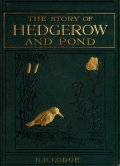
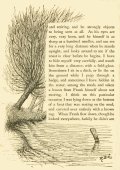
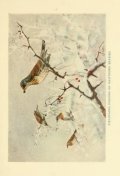 |
|